There are many different kinds of animals on earth. Some of them are arboreal and spend their lives in the trees. Others are aerial and spend most of their time flying. But, the vast majority of creatures on the planet are actually terrestrial animals. Terrestrial animals are those that spend their lives on the ground, rather than in the water, air, or tree canopy.
Here, we’ll learn about 10 fascinating terrestrial animals!
1. Eastern Diamondback Rattlesnake

Eastern diamondback rattlesnakes’ pattern often fades towards their tail.
©Chase D’animulls/Shutterstock.com
As pit vipers, eastern diamondback rattlesnakes are some of the deadliest venomous snakes in North America. They live only in the southeastern United States and can grow to over seven feet in length. Like all rattlesnakes, they have rattles on their tails, wide, leaf-shaped heads, and hinged fangs. They’re easily recognizable as terrestrial animals by their ground-dwelling habits. Eastern diamondbacks eat mostly rodents, including mice and rats, as well as rabbits, gophers, and hares. Bites to humans are rare and generally occur when people either mistakenly get too close, or purposefully harass or attempt to handle these dangerous snakes.
2. Hippopotamus
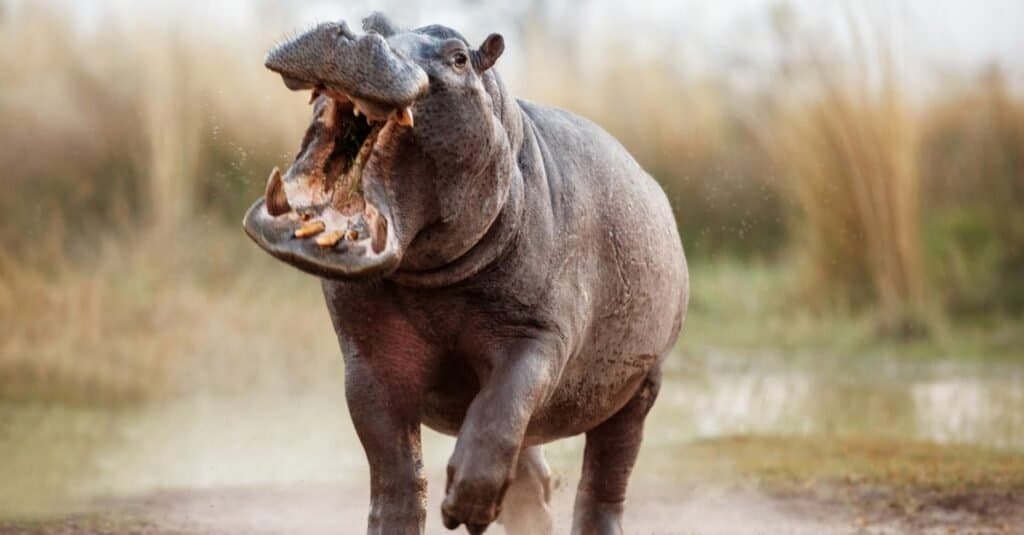
Hippopotamus are large animals.
©PhotocechCZ/Shutterstock.com
The hippopotamus is one of the largest terrestrial animals on the planet. These semiaquatic animals are native to much of Africa and can weigh up to 9,900 pounds. They spend much of their time wallowing in shallow fresh water, feeding on aquatic vegetation. Despite the fearsome tusks of males, hippopotamus’ are strictly vegetarian, though fights over territory can become deadly. These incredible creatures are currently listed as Vulnerable to extinction.
3. Tiger
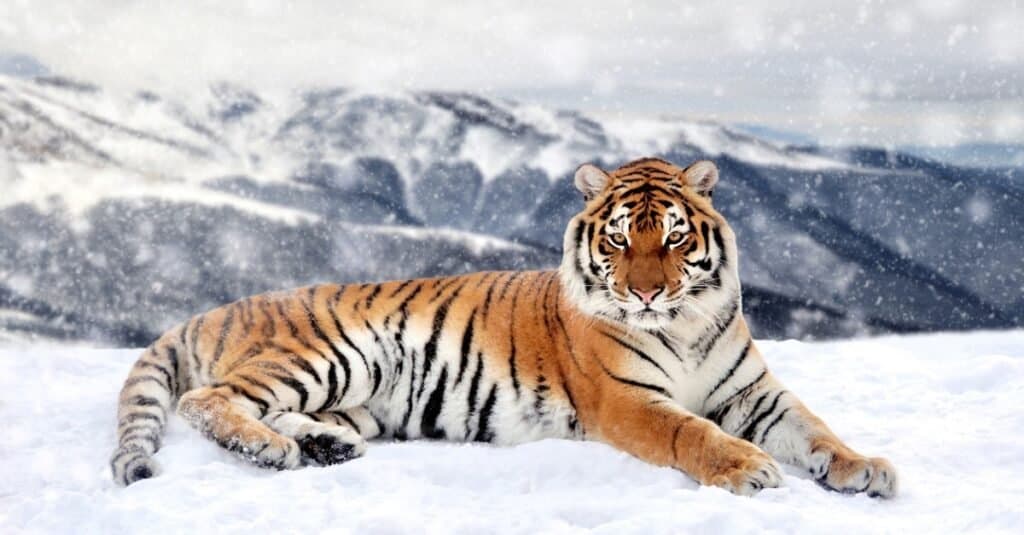
The tiger, with its powerful jaws, muscular legs, and sharp claws, is the strongest cat.
©iStock.com/Byrdyak
Tigers are some of the most famous terrestrial animals in the world. Today, there are two recognized species of tiger; the Sunda island tiger, and the continental tiger. Unfortunately, tiger populations worldwide are less than 5% of what they were 100 years ago. Tigers are the largest felines on earth, and feed on all manner of mammals, including deer, wild boar, and gazelle. Perhaps their most striking feature is their orange and black stripes and heavy, whiskered heads. Tragically, their unique furs are prized by collectors and often lead to the tiger’s death at the hands of poachers.
4. Crocodile

Crocodiles are very large reptiles.
©Bildagentur Zoonar GmbH/Shutterstock.com
Crocodiles are some of the largest reptiles on the planet, they’re also fierce, semi-aquatic terrestrial animals. These predators live in Australia, Asia, Africa, and the Americas. As carnivores, they eat mammals, reptiles, fish, birds, and amphibians. Young crocodiles prey mostly on insects, fish, turtles, and frogs.
Crocodiles are apex predators, and, in Africa, they eat zebra, wildebeest, gazelle, and other ungulates. They are typically dark green, with large, conical teeth designed for gripping prey. When hunting, these predators stay submerged in murky water, erupting in one swift motion to drag prey under.
5. Galapagos Giant Tortoise
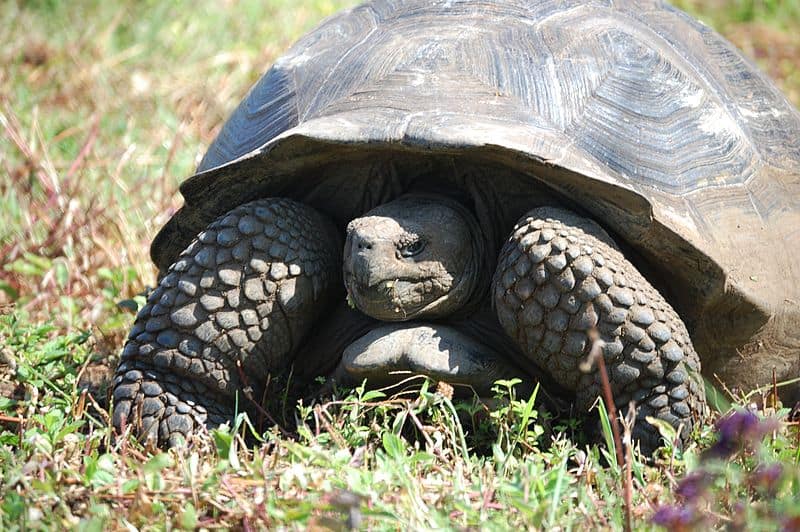
Galapagos tortoise
is one of the largest tortoises.
©NOAA Photo Library / CC BY 2.0, Flickr – License
The Galapagos giant tortoise is one of the largest tortoises on Earth, and, it’s one of the most famous terrestrial animals on the planet. These giant reptiles can live over 100 years, and weigh nearly 1,000 pounds. They’re found only in the Galapagos Islands. Galapagos giant tortoises have heavy, brownish green shells and thick, short legs designed to carry their great weight. They spend much of their time foraging for greens, such as lichen, aquatic plants, fruits, and forbes. These incredible creatures are currently listed as Endangered.
6. Komodo Dragon
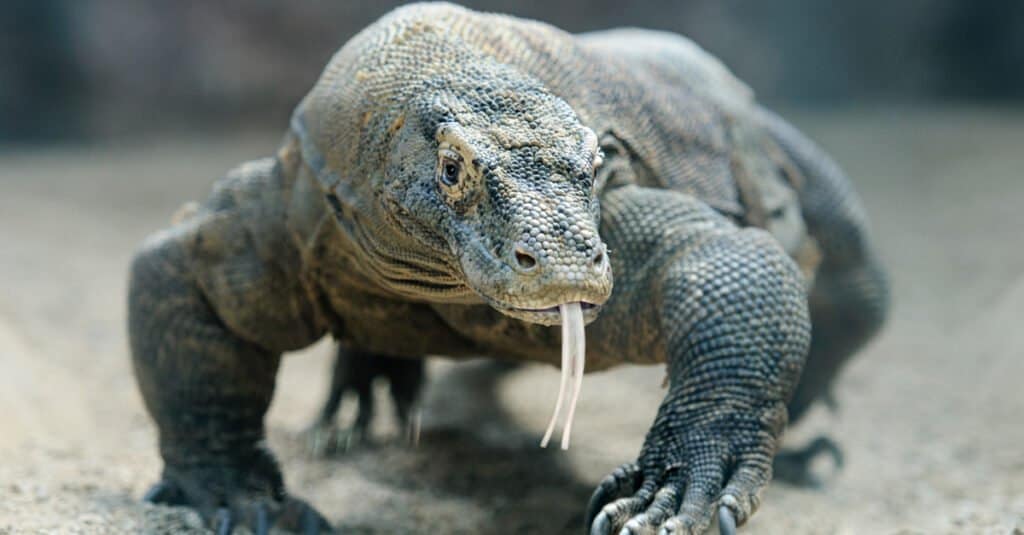
The Komodo dragon is the largest vertebrate animal known to reproduce asexually.
©Anna Kucherova/Shutterstock.com
Komodo dragons are the largest lizards on Earth. Famous for their bacteria-filled bites, these terrestrial animals are strictly carnivorous, and can take down prey as large as adult Javan rusa (a type of deer). Komodo dragons live only in Indonesia, where they’re currently listed as Endangered. In addition to rusa, they also eat carrion (dead animals) birds, and other reptiles—including smaller komodo dragons.
Komodo dragons are generally olive green to dark green, with smooth scales similar to those of the smaller monitor lizard. They have narrow heads and mouths filled with up to 60 serrated, inch-long teeth. They’re low to the ground but can reach impressive speeds when running.
7. Mule Deer
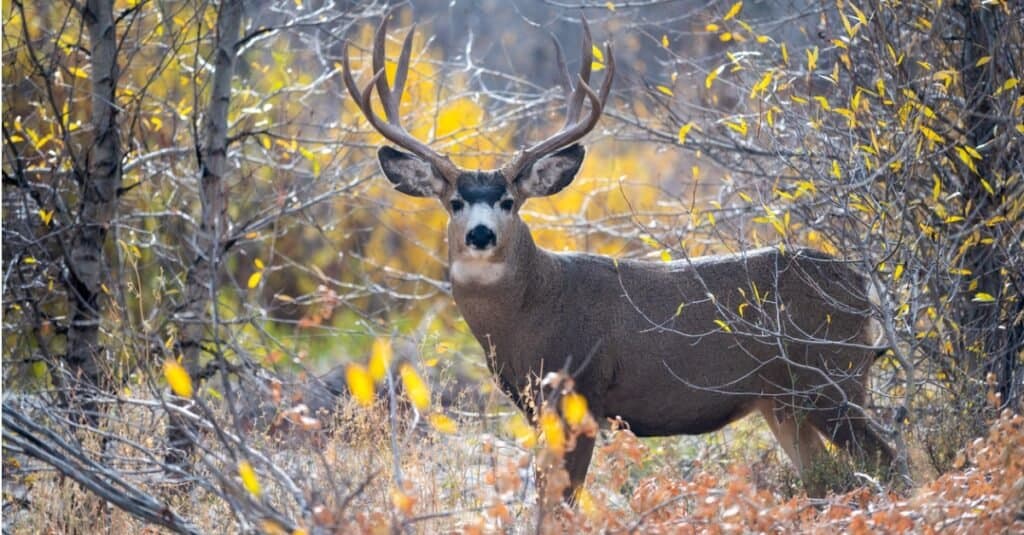
Mule deer grow impressive antlers.
©iStock.com/EEI_Tony
If you live in the western United States, chances are good you’ve seen a mule deer. These ubiquitous terrestrial animals are larger than white-tailed deer but smaller than elk and moose. They live throughout western North America, and can even be found in Argentina and on the Hawaiian island of Kauai. Mule deer are dull brown in color, with large, mule-like ears. Males grow impressive antlers in the fall, which they shed in the winter and regrow beginning in early summer. Like all deer, mule deer are herbivores and eat mainly grasses, leaves, and tree bark.
8. Grizzly Bear
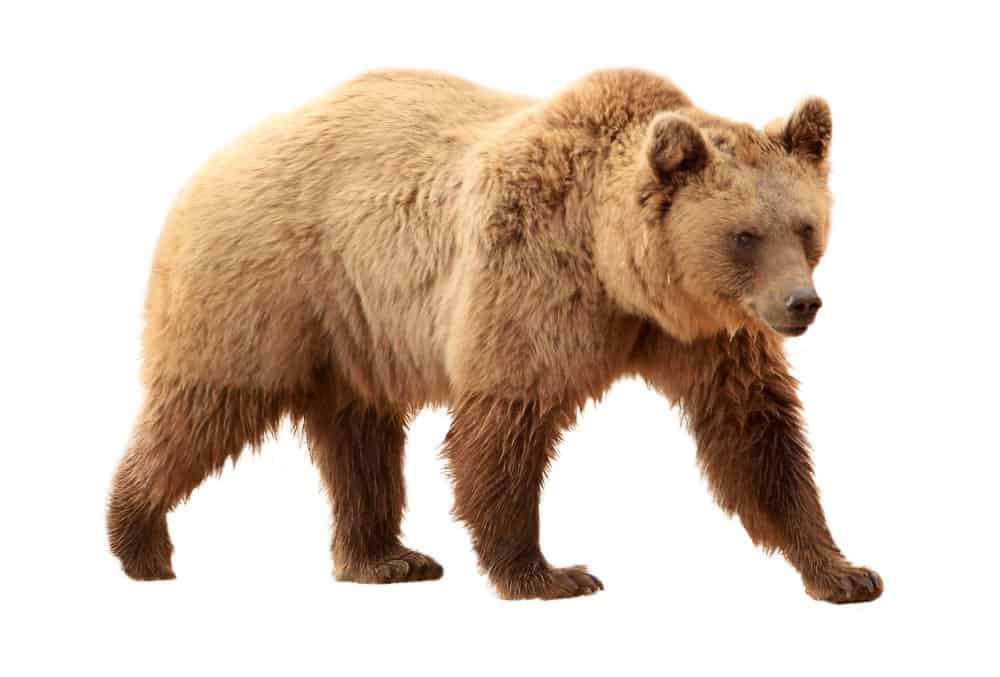
Grizzly bears are omnivores.
©ducu59us/Shutterstock.com
The grizzly bears are one of the largest extant members of the bear family, superseded only by polar bears. Also known as brown bears, these giants once inhabited most of North America and Asia. Today, they live in only a small percent of their former range, due mostly to the concerted extermination efforts of humans. Brown bears can grow up to 800 pounds and may stand over eight feet tall on two legs. They’re omnivores, and eat everything from berries and lichen to salmon and elk. Despite their fearsome appearance, grizzlies inspire awe and respect in people around the world.
9. Gray Wolf

The gray wolf hunts deer, elk, and moose.
©Nagel Photography/Shutterstock.com
Now listed as Endangered, gray wolves were once on the brink of extinction, due, again, to concentrated extermination efforts by humans. These terrestrial animals are closely related to domestic dogs, only a few of which maintain a resemblance to their wild forebears. Gray wolves are native to North America, where they hunt deer, elk, and even moose. Today, gray wolves are one of the biggest draws to Yellowstone National Park, where they can be observed thinning herds of elk.
10. Red Fox

The
red wolf
is considered invasive in many parts of the world.
©iStock.com/Tyrannax
These terrestrial animals live all over the world, in North America, Asia, Europe, and even northern Africa and Australia. Red foxes are considered invasive in many parts of the world, and, due to their predatory nature, often have adverse effects on native species. As their name suggests, red foxes are typically reddish orange, with large, upright ears, and famously bushy tails. They eat everything from rabbits and hares to ground-dwelling birds, lizards, and amphibians.
Read More:
10 Aerial Animals: The Most Amazing Animals That Can Fly
The photo featured at the top of this post is © Audrey Snider-Bell/Shutterstock.com
Sources
- Florida Museum, Available here: https://www.floridamuseum.ufl.edu/florida-snake-id/snake/eastern-diamond-backed-rattlesnake/
- World Wildlife, Available here: https://www.worldwildlife.org/species/tiger
- Galapagos Conservation, Available here: https://galapagosconservation.org.uk/wildlife/galapagos-giant-tortoise/
- National Wildlife Federation, Available here: https://www.nwf.org/Educational-Resources/Wildlife-Guide/Mammals/Gray-Wolf
Thank you for reading! Have some feedback for us? Contact the AZ Animals editorial team.






